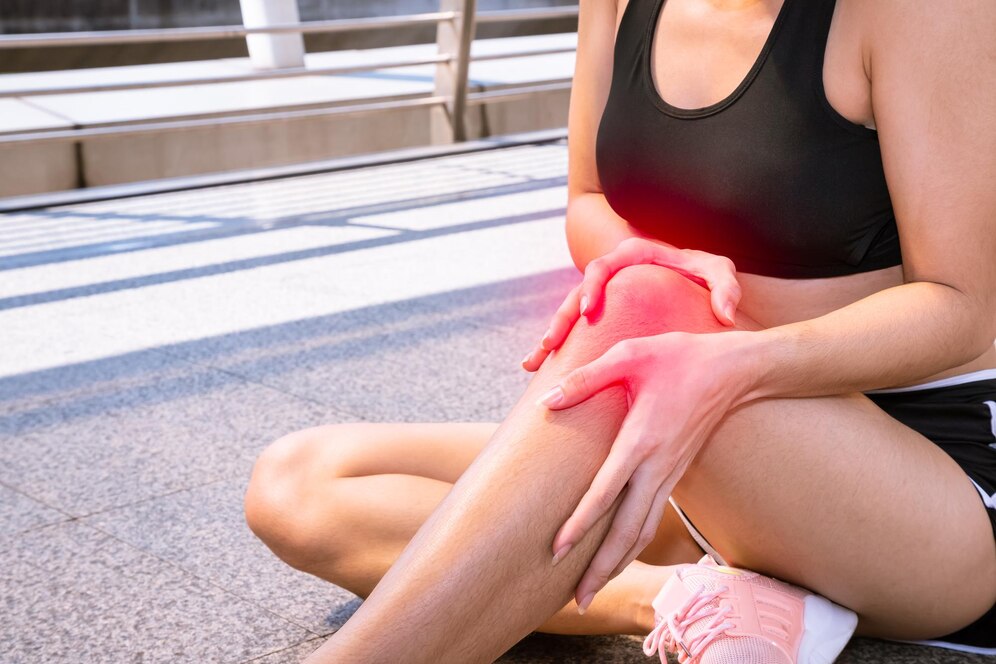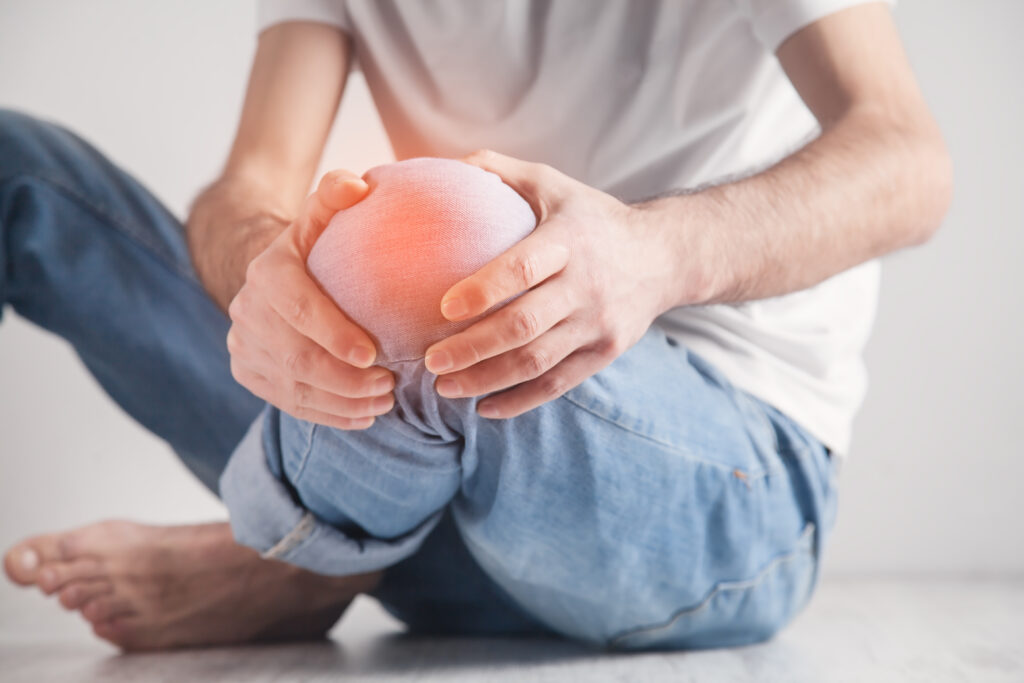When you think about healing sports injuries in Calhoun, it's important to take into account a range of genuine approaches that go beyond traditional methods. You might find that community support networks play a vital role in recovery, while innovative rehabilitation techniques can greatly enhance your healing process. By integrating tailored nutrition and mindfulness practices, you're not just addressing physical needs but also emotional well-being. What if these holistic strategies could change the way you view recovery? Exploring these elements further could reveal surprising insights into effective healing.
Community Support Networks
Community support networks play an essential role in healing sports injuries. When you're sidelined by an injury, it's not just your body that needs care; your mind and spirit do too. Surrounding yourself with a supportive community can greatly impact your recovery process. Friends, family, teammates, and even local organizations can offer the encouragement and motivation you need to stay focused and positive.
Connecting with others who understand your journey can be invaluable. They can share their experiences, offer practical advice, and help you stay accountable to your rehabilitation goals. Joining local sports clubs or support groups can introduce you to individuals who've faced similar challenges, fostering a sense of camaraderie that can lift your spirits. You won't feel alone in your struggle.
Additionally, community networks can provide resources like workshops, seminars, or access to professionals who specialize in sports injuries. These resources can help you learn about the best practices for recovery, including injury prevention strategies and strengthening exercises. By engaging with these networks, you're not only benefiting yourself but also contributing to a culture of support and healing.
Don't underestimate the power of encouragement. Simple words of affirmation from those around you can instill hope when you're feeling frustrated.
As you navigate your recovery journey, lean on your community. Their support can make a world of difference, helping you stay resilient and committed to your healing process. Embrace the spirit of togetherness; it can be your greatest ally on the road to recovery.
Holistic Therapy Options
When dealing with sports injuries, tapping into the mind-body connection can really enhance your healing process.
You might find that natural healing methods, like yoga or meditation, not only help reduce pain but also promote overall wellness.
Exploring these holistic therapy options can empower you to take charge of your recovery.
Mind-Body Connection
A growing number of athletes are realizing the benefits of the mind-body connection in healing sports injuries. This approach emphasizes the link between mental and physical well-being, helping you tap into your body's natural healing processes. By focusing on this connection, you can enhance your recovery and overall performance.
Practices like mindfulness meditation, visualization, and breathing exercises can greatly impact how you perceive pain and stress. Engaging in these techniques allows you to cultivate a positive mindset, which can help reduce anxiety about your injury and foster a sense of control over your healing journey.
Additionally, techniques such as yoga and tai chi promote body awareness and flexibility, reducing the risk of re-injury. You'll find that these practices encourage relaxation and can improve your range of motion, which is essential in the recovery phase.
Incorporating the mind-body connection into your rehabilitation routine can lead to more effective healing. It's not just about physical treatment; it's about nurturing your mental state, too.
Natural Healing Methods
Building on the mind-body connection, many athletes are exploring natural healing methods to complement their recovery from sports injuries. These holistic therapy options can enhance your healing process and help you regain strength and flexibility.
One popular approach is acupuncture, which involves inserting thin needles at specific points to reduce pain and inflammation. This ancient technique can stimulate your body's natural healing response, making it a valuable tool in your recovery arsenal.
Another effective option is massage therapy. Regular sessions can improve circulation, relieve muscle tension, and promote relaxation, all of which are vital for a successful recovery.
You might also consider incorporating herbal remedies into your routine. Herbs like arnica and turmeric have anti-inflammatory properties that can support your healing journey.
Finally, don't underestimate the power of mindfulness and meditation. These practices can help you manage stress and improve your mental resilience during recovery.
Innovative Rehabilitation Techniques
When recovering from a sports injury, you can benefit from innovative rehabilitation techniques that use cutting-edge therapy equipment.
By incorporating personalized recovery programs and holistic healing strategies, you'll enhance your healing process.
Let's explore how these approaches can get you back in the game faster and stronger.
Cutting-edge Therapy Equipment
Innovation in rehabilitation technology has transformed the way athletes recover from injuries, making the healing process more efficient and effective. You'll find that cutting-edge therapy equipment plays a vital role in your recovery journey.
Tools like cryotherapy chambers help reduce inflammation and speed up healing by exposing your body to extreme cold. Meanwhile, electrical stimulation devices can stimulate muscles and promote blood flow, making them invaluable for restoring strength.
Another revolutionary tool is the AlterG Anti-Gravity Treadmill, which allows you to run or walk with reduced body weight, minimizing impact on injured areas. This enables you to maintain fitness while promoting healing.
Additionally, laser therapy devices utilize specific wavelengths of light to accelerate tissue repair, alleviating pain without invasive procedures.
Wearable technology is also gaining traction, giving you real-time feedback on your physical activity and recovery progress. These devices can help you track your performance and adjust your rehabilitation regimen accordingly.
With these advanced tools at your disposal, you'll have the support you need to recover effectively and return to your sport stronger than ever. Embrace these innovations, and you'll see the difference in your healing process.
Personalized Recovery Programs
Tailoring your recovery experience can greatly enhance your healing process. By creating a personalized recovery program, you can address your specific needs and goals, leading to a more effective rehabilitation.
Here are four key elements to take into account when designing your program:
- Assessment of Injury: Start with a thorough evaluation of your injury. Understanding the nature and extent of your damage is essential to formulating an effective recovery path.
- Custom Exercise Regimen: Incorporate exercises targeted to strengthen affected areas. This not only promotes recovery but also prevents future injuries.
- Nutritional Support: Don't underestimate the power of nutrition. A balanced diet rich in vitamins and minerals can expedite healing, so think about consulting a nutritionist for tailored advice.
- Ongoing Monitoring: Regular check-ins with your healthcare provider will help you track progress and make necessary adjustments to your recovery plan.
Holistic Healing Strategies
Incorporating holistic healing strategies into your recovery can elevate your rehabilitation experience by addressing both the physical and emotional aspects of healing. Instead of solely focusing on the injury, think about your overall well-being.
Techniques like yoga and meditation can help you manage stress and improve your mental resilience, which is essential during recovery. Consider adding gentle movement practices that promote blood flow and flexibility. Tai chi, for example, encourages mindfulness and can enhance your body's awareness, helping you avoid future injuries.
Nutritional support is another vital element; fueling your body with nutrient-rich foods accelerates healing and boosts your immune system. Don't overlook the power of therapeutic touch. Massage therapy can alleviate muscle tension and improve circulation, while acupuncture may help reduce pain and inflammation.
Engaging in creative outlets like art or journaling can also provide emotional release, aiding in your recovery journey. Finally, seek support from community or group therapy sessions. Sharing experiences with others who understand can provide encouragement and insight.
Embracing these holistic strategies can lead to a more balanced and effective rehabilitation process, fostering both your physical recovery and emotional healing.
Importance of Nutrition
How essential is nutrition when it comes to healing sports injuries? You might be surprised to learn just how important it is. Proper nutrition not only supports your body's natural healing processes but also helps to prevent further injuries.
When you fuel your body correctly, you create the perfect environment for recovery. Here are four key aspects of nutrition that can greatly impact your healing journey:
- Protein Intake: Proteins are the building blocks of muscle and tissue repair. Making sure you get enough quality protein helps your body rebuild damaged muscles and ligaments quickly.
- Hydration: Staying hydrated is critical for maintaining ideal bodily functions. Water aids in nutrient transport and helps reduce inflammation, which is important when you're recovering from an injury.
- Vitamins and Minerals: Nutrients like Vitamin C and Zinc play a pivotal role in collagen formation and immune function. Include a variety of fruits and vegetables in your diet to guarantee you're getting these essential vitamins.
- Healthy Fats: Omega-3 fatty acids found in fish, flaxseeds, and walnuts can help reduce inflammation and promote healing. Incorporating these healthy fats into your meals can speed up your recovery process.
Mindfulness and Mental Health
Mindfulness plays an essential role in your mental health, especially when recovering from sports injuries. When you're dealing with pain, frustration, or anxiety, practicing mindfulness can help you stay grounded. It encourages you to focus on the present moment, alleviating overwhelming thoughts about your injury or the recovery process.
By tuning into your body and emotions, you can better understand your needs and feelings. This awareness allows you to respond more effectively to stress, reducing anxiety related to your injury. Simple techniques like deep breathing, meditation, or visualization can greatly improve your mental state during recovery.
Incorporating mindfulness into your daily routine can enhance your resilience. It helps you cultivate a positive mindset, which is essential for healing. Instead of fixating on what you can't do, mindfulness trains you to appreciate small victories, like improved mobility or reduced pain levels. These shifts in perspective can make a world of difference in how you approach recovery.
Additionally, mindfulness fosters patience. Recovery takes time, and it's easy to become discouraged. By practicing mindfulness, you can learn to accept your current state without harsh self-judgment, which is crucial for your mental well-being.
Active Recovery Strategies
Active recovery strategies can play an essential role in your rehabilitation after a sports injury. These approaches help maintain your physical fitness while allowing your body to heal. By engaging in low-intensity activities, you promote blood flow and flexibility, which can expedite your recovery process.
Here are four effective active recovery strategies you can incorporate:
- Gentle Stretching: Incorporate daily stretching routines that target the injured area and surrounding muscles. This helps maintain flexibility and prevents stiffness, promoting a quicker recovery.
- Low-Impact Aerobic Exercises: Activities like walking, swimming, or cycling can elevate your heart rate without putting undue stress on your injury. Aim for 20-30 minutes of these exercises a few times a week to keep your cardiovascular system engaged.
- Foam Rolling: Using a foam roller can aid in muscle recovery by alleviating tightness and improving circulation. Focus on the injured area and adjacent muscle groups to enhance mobility and reduce soreness.
- Light Resistance Training: Depending on your injury's nature, incorporating light resistance exercises can help maintain muscle strength. Use bodyweight or light weights to avoid strain while still engaging your muscles.
Alternative Medicine Approaches
Alternative medicine approaches can offer valuable support in healing sports injuries, often complementing traditional treatments. You may explore various methods that focus on holistic healing, improving your recovery and overall well-being.
One popular option is acupuncture, which involves inserting thin needles into specific points on your body to relieve pain and promote healing. Many athletes find this technique effective for managing pain and reducing inflammation.
Another approach is chiropractic care. Chiropractors focus on aligning your spine and improving your body's biomechanics. This can help alleviate pain and restore mobility after an injury. Regular sessions may enhance your athletic performance and prevent future injuries.
Herbal medicine is another alternative worth considering. Certain herbs, like arnica and turmeric, have anti-inflammatory properties that can speed up recovery. You might find herbal supplements beneficial when combined with your regular treatment plan.
Massage therapy is also a powerful tool for recovery. It helps release muscle tension, improves circulation, and promotes relaxation, all of which can aid in your healing process. Consider finding a therapist who specializes in sports massage for targeted relief.
Lastly, mindfulness practices such as yoga or meditation can improve your mental resilience during recovery. By incorporating these techniques, you can manage stress and maintain a positive mindset, which is essential for healing.
Success Stories From Athletes
Many athletes have experienced remarkable recoveries from sports injuries by integrating alternative medicine approaches into their treatment plans.
You might be surprised to learn how these methods can complement conventional therapies, leading to faster and more effective healing.
Here are some inspiring success stories:
- Sarah, the Marathon Runner: After suffering a knee injury, Sarah turned to acupuncture. Within weeks, she noticed reduced pain and improved mobility, enabling her to return to training and complete her next marathon.
- James, the Soccer Player: Following a severe ankle sprain, James opted for a blend of chiropractic care and physical therapy. This holistic approach allowed him to regain strength faster than expected and helped him score the winning goal in the championship match.
- Emily, the Gymnast: After a wrist injury, Emily incorporated yoga into her recovery routine. The combination of stretching and mindfulness not only healed her injury but also enhanced her performance, allowing her to execute her routines with greater confidence.
- Mark, the Cyclist: Mark faced a lengthy recovery from a shoulder injury. By utilizing herbal supplements alongside traditional rehab, he experienced a significant reduction in inflammation and pain, enabling him to get back on his bike sooner.
These stories illustrate how alternative medicine can play an essential role in recovery.
Conclusion
In Calhoun, healing from sports injuries goes beyond just physical recovery. By embracing community support, innovative therapies, and personalized nutrition, you can find an all-encompassing path to wellness. Incorporating mindfulness and exploring alternative medicine can enhance your journey, while active recovery strategies keep you engaged. Remember, countless athletes have successfully navigated this process, proving that with the right approach, you can overcome injuries and return stronger than ever. Your healing journey is a collaborative effort—embrace it!



